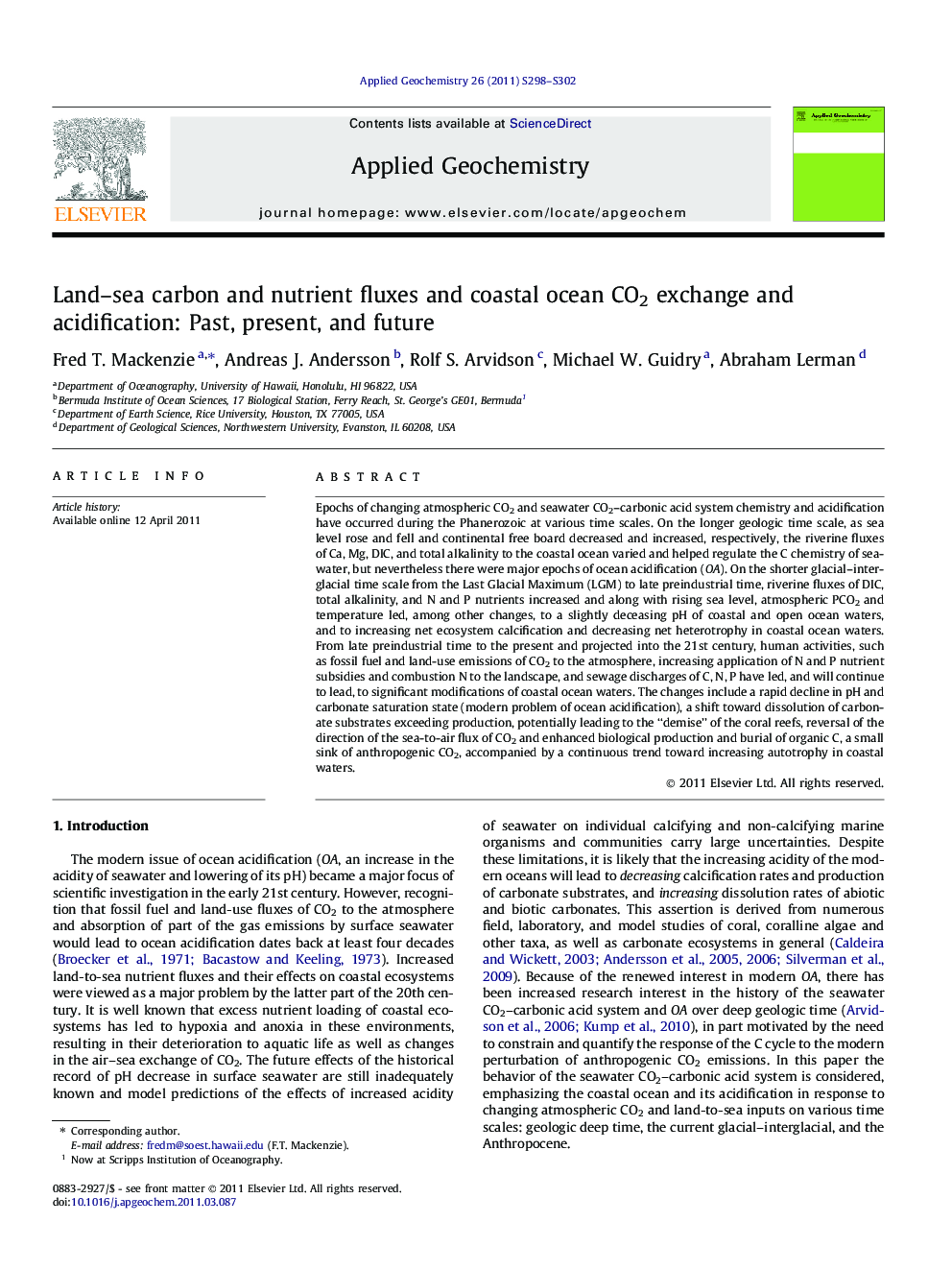| کد مقاله | کد نشریه | سال انتشار | مقاله انگلیسی | نسخه تمام متن |
|---|---|---|---|---|
| 4436527 | 1310683 | 2011 | 5 صفحه PDF | دانلود رایگان |

Epochs of changing atmospheric CO2 and seawater CO2–carbonic acid system chemistry and acidification have occurred during the Phanerozoic at various time scales. On the longer geologic time scale, as sea level rose and fell and continental free board decreased and increased, respectively, the riverine fluxes of Ca, Mg, DIC, and total alkalinity to the coastal ocean varied and helped regulate the C chemistry of seawater, but nevertheless there were major epochs of ocean acidification (OA). On the shorter glacial–interglacial time scale from the Last Glacial Maximum (LGM) to late preindustrial time, riverine fluxes of DIC, total alkalinity, and N and P nutrients increased and along with rising sea level, atmospheric PCO2 and temperature led, among other changes, to a slightly deceasing pH of coastal and open ocean waters, and to increasing net ecosystem calcification and decreasing net heterotrophy in coastal ocean waters. From late preindustrial time to the present and projected into the 21st century, human activities, such as fossil fuel and land-use emissions of CO2 to the atmosphere, increasing application of N and P nutrient subsidies and combustion N to the landscape, and sewage discharges of C, N, P have led, and will continue to lead, to significant modifications of coastal ocean waters. The changes include a rapid decline in pH and carbonate saturation state (modern problem of ocean acidification), a shift toward dissolution of carbonate substrates exceeding production, potentially leading to the “demise” of the coral reefs, reversal of the direction of the sea-to-air flux of CO2 and enhanced biological production and burial of organic C, a small sink of anthropogenic CO2, accompanied by a continuous trend toward increasing autotrophy in coastal waters.
► Seawater CO2-carbonic acid system chemistry and epochs of ocean acidification have varied nearly in concert with atmospheric CO2 changes at various time scales during the Phanerozoic.
► Long-term geologic changes in atmospheric CO2 and ocean carbon chemistry largely reflect both plate tectonic mechanisms and biological evolution.
► From the Last Glacial Maximum to late preindustrial time, as sea level and atmospheric CO2 rose and the climate warmed, riverine fluxes of DIC, total alkalinity, and N and P nutrients increased and the pH and carbonate saturation state of the global coastal ocean fell.
► Nominal modeling of the future state of the global coastal ocean forecasts profound changes in its land-derived nutrient subsidies, and acidity, carbonate saturation state, magnitude and direction of air-sea CO2 exchange and trophic status of its waters due primarily to anthropogenic activities.
Journal: Applied Geochemistry - Volume 26, Supplement, June 2011, Pages S298–S302